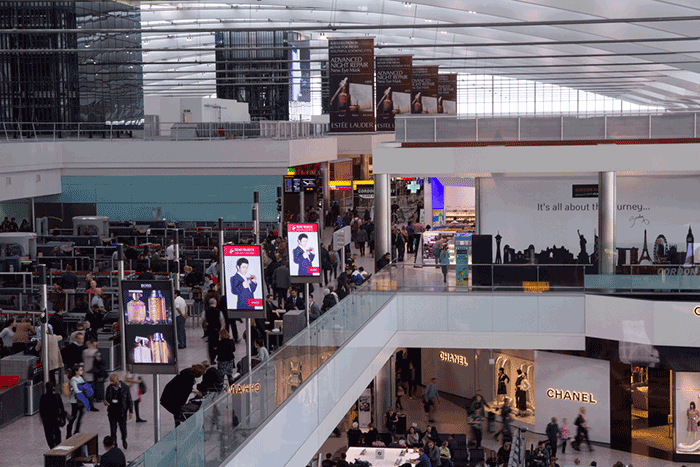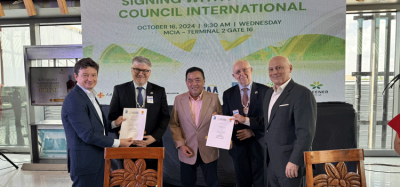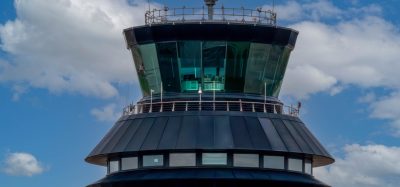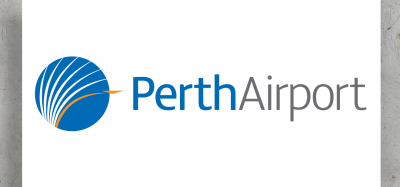British Airways at T5 – minimising environmental impact
- Like
- Digg
- Del
- Tumblr
- VKontakte
- Buffer
- Love This
- Odnoklassniki
- Meneame
- Blogger
- Amazon
- Yahoo Mail
- Gmail
- AOL
- Newsvine
- HackerNews
- Evernote
- MySpace
- Mail.ru
- Viadeo
- Line
- Comments
- Yummly
- SMS
- Viber
- Telegram
- Subscribe
- Skype
- Facebook Messenger
- Kakao
- LiveJournal
- Yammer
- Edgar
- Fintel
- Mix
- Instapaper
- Copy Link
Posted: 11 December 2009 | Jonathon Counsell, Head of Environment, British Airways | No comments yet
Home to some 92% of British Airways’ Heathrow flights, BAA and British Airways have worked in partnership to improve the environmental performance of the airport’s ground handling operation…


British Airways is the UK’s largest international scheduled airline and the largest operator at Heathrow. As the UK’s premier international hub airport, Heathrow plays a central – and unique – role in UK plc. Terminal 5, opened in March 2008 at a cost of £4.3 billion, is a state-of-the-art world leading facility capable of handling 30 million passengers annually…
Jonathon Counsell, Head of Environment at British Airways explains how the company’s “One Destination” corporate responsibility strategy has been driving improvements in its operations at T5.
T5 History
Looking at the sleek lines of T5, it is easy to forget the 13 years of planning and the four year public planning enquiry that preceded the historic ground breaking ceremony in 2002. Construction certainly presented some unusual challenges. Before construction began, an archaeological dig of the site recovered over 80,000 artefacts, some of which dated back to the Stone Age. Two rivers running through the middle of the site had to be diverted and more than 40,000 fish and 1,000 mussels were relocated. The construction site was the biggest in Europe, taking more than 37 million person hours to build and resulting in the movement of 6.5 million cubic metres of earth (enough to fill the new Wembley Stadium 1.5 times).
The T5 design phase gave BAA and BA the opportunity to build sustainability into the building and site design. Early on BAA invited independent industry and environmental experts to become part of an Environmental Assessment and Advisory Group (EAAG), to advise and challenge the Terminal 5 development team to meet the high environmental standards set for the site and its subsequent operation.
T5 in practice – reducing carbon emissions
Both BAA and BA have corporate targets to minimise the impact of their operations in the areas of carbon emissions and waste. British Airways has a carbon efficiency target to improve carbon efficiency by 25% by 2025 (based on 2005 levels). A longer-term target has also been set to reduce net emissions by 50% by 2050, relative to 2005. The targets incorporate both ground and air emissions. The majority of our emissions are from our flying operations, however, our corporate targets incorporate all aspects of our operations, including vehicle emissions, buildings and ground equipment.
A number of our improvement programmes are aimed at reducing emissions and noise on the ground. A project earlier this year led by the BAA, Sustainable Aviation Group and facilitated by the Clinton Climate Initiative, was tasked with identifying the best ways to further reduce ground carbon dioxide emissions at Heathrow. British Airways, together with other UK airlines, NATS, and aerospace manufacturers, highlighted the importance of working together on this issue.
Graham Earl, BAA’s Head of Climate Change, who has been leading this work on behalf of Sustainable Aviation, explains that “The CO2 reduction on the ground programme is an excellent example of the industry working together to deliver reductions. The programme is still at the early stages, but our work at Heathrow shows that airlines and airport operators are already making significant contributions to carbon reductions by cutting ground engine running and using fixed electrical ground power and pre-conditioned air. For a single flight this can be as much as 20% reduction. We believe that by extending best practice across Heathrow, there are more savings to be made – possibly two to three times the amount of emission reductions we are seeing at present.”
Cutting emissions and managing local air quality during operation
Fixed Electrical Ground Power (FEGP) and Pre-Conditioned Air (PCA) are provided at all pier stands to negate the need for aircraft to keep their auxiliary engines running whilst on the stand. The additional stands Terminal 5 provides and the layout of the new taxiways mean that planes will spend less time taxiing to the runways, resulting in a reduced impact on local air quality and carbon emissions. For all routine take-offs BA uses reduced take-off thrust, which significantly reduces Oxides of Nitrogen (NOx) emissions.
BA has developed procedures for aircraft to shut down an engine for taxi-in after landing and is also developing procedures for aircraft to taxi-out to the runway with reduced engines whenever this can meet strict safety conditions. This reduces fuel burn, CO2 and NOx emissions.
As part of the move to T5, British Airways invested more than £25m on a new fleet of 550 airport vehicles. The new fleet includes buses specified to the future Euro 5 exhaust emission standard and a fleet of electric baggage tugs. Operational changes, for example, zonal working to reduce the amount of staff movements around the terminal, have led to a reduction in the number of vehicle movements. Remote monitoring by telematics technology is being used to manage fleet efficiency and an automatic fuel management system has been fitted to refuelling equipment at Heathrow. The BAA’s Heathrow Clean Vehicles Programme, of which BA was a founder member, aims to improve the environmental performance of the ground vehicle fleet at the airport.
Reducing noise
Noise is one of the most emotive aspects of an airport’s operations. T5 presented the opportunity to look at the noise generated by the airport and include features in the campus design to minimise and contain this noise. The wavy wall constructed at the south-west corner of the airport provides a noise barrier. The distinctive wave design has been proven to be the most efficient at reflecting noise.
BA continues to use best practice for aircraft arrivals and is supporting the new Interim Code of Practice for departures. Launched this month as an industry collaboration been airports, airlines, the Civil Aviation Authority and a number of other key industry partners, the new code will reduce noise and emissions.
BA has a target to reduce average noise per flight by 15 per cent by 2015.
At the moment, noise energy has remained the same over the last three years despite an increase in the utilisation of BA’s fleet. At Heathrow, Continuous Descent Approach adherence (for fuel efficiency and noise reduction) was 95% for both day and night for the last calendar year, compared to 82% for day and 88% for night for the airport average.
Building in energy efficiency
Energy use in British Airways UK properties has been steadily falling as a result of company-wide initiatives to achieve a 10% reduction by April 2009. The British Airways Property Team achieved the energy target six months ahead of schedule. A new target has been set to reduce energy use by a further 10% by April 2012.
Within the T5 site, energy efficiency was a high priority at the design phase. The building is powered by a combined heat and power station that recycles waste heat back into the building, delivered by a new underground pipeline providing 85% of the Terminal’s heating needs. The airport terminal building has incorporated a number of clever energy efficiency features. The main building is glazed on all façades reducing the need for artificial lighting and the southern most façade has angled louvres to prevent solar gain. Variable speed drives are fitted on all baggage systems and escalators.
One of the advantages of T5 is that it has allowed BA to combine three separate operations: Terminals 1 and 4 and its Crew Report Centre. Over the last year, the energy team has been commissioning the sophisticated Buildings Management System at T5. While there is still work to do, especially around the user interface for the numerous lighting systems, initial projections for the terminal are good and show a significant reduction in energy use.
Greener design
British Airways has set a target for zero waste to landfill and 50% recycling at Heathrow and Gatwick by 2010.
Where practical, waste is segregated at source to promote recycling. Where this does not happen, mixed wastes are sorted by the waste contractor using a Materials Recovery Facility. Where the waste cannot be recycled, it is now processed by a local waste to energy incineration plant, avoiding the need to send waste to landfill. Currently, in excess of 35% of British Airways dry waste is recycled at Heathrow and Gatwick. However, a greater percentage is recycled at Heathrow Terminal 5 (over 50%).
As well as providing much better waste segregation and recycling facilities, BA has been taking the initiative to reduce waste at source. BA constantly reviews its catering operations, minimising packaging and reducing weight. New catering contracts at Heathrow come into effect in the near future. This will involve the creation of a new catering unit for shorthaul operations at Heathrow and will incorporate novel technologies to reduce the impact of airline catering.
T5 cooling water is supplied from efficient ammonia chillers in T5 Energy Centre, removing the need for harmful HCFCs and HFCs from the main building. Timber supplied was from sustainable sources (FSC approved) and PVC use in the building was minimised.
A significant improvement in water use and management was achieved on the site. At Terminal 5, 85% of the rainwater that hits the building is collected and re-used for non-potable uses, reducing demands on the mains system by 70%. In the terminals, taps, toilets and showers have been fitted with water saving devices, for example aerated flow and sensor controls. Out on the apron areas, spillage prevention and management has been built into the bulk storage areas for de-icing materials and hydrocarbon interceptors are on each stand. Vehicle wash water is on a closed-loop system that allows the water to be recycled.
Looking forward
As well as a new terminal, British Airways is looking forward to a major fleet renewal programme on the horizon. Environmental considerations have been a key factor in the order of new aircraft. 24 Boeing 787 and 12 Airbus A380s are due to be delivered over the next few years. These aircraft are not only 17 to 30% more fuel efficient than the Boeing 747 and 767s that they will replace; they are also quieter and produce less carbon dioxide and nitrogen oxide (NOx) emissions.
In summary, although there are design features about T5 I might change now, overall the company is pleased with the end result. We were able to achieve a step-change in environmental performance in T5 and went beyond any standards demanded by the law. The huge advantage T5 has given us, has been to streamline our operations in one location and this has provided environmental benefits. In September we recorded the best ever punctuality performance for that month, with over half our flights leaving early and 87% leaving on time. This means less noise, less emissions and less waste – a great environmental success story.


















